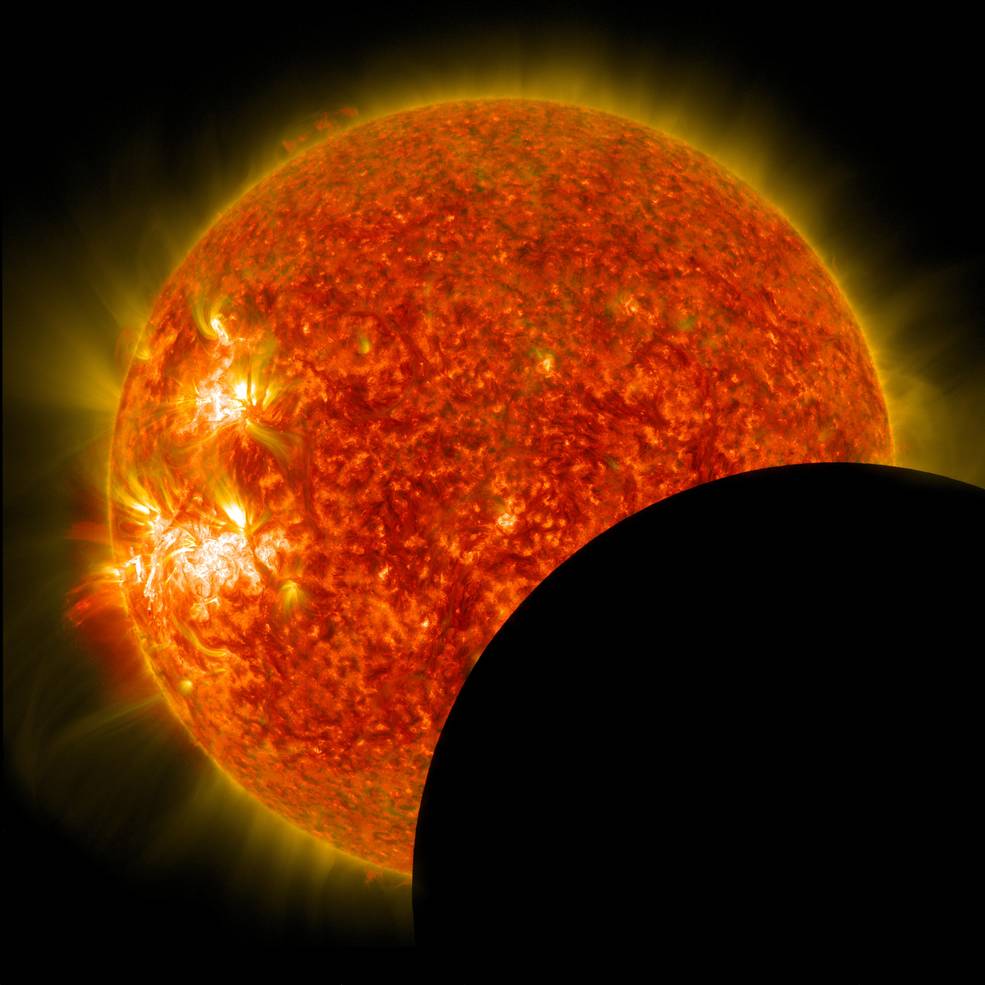NASA Solar Eclipse Webcast Wednesday Will Cover Safety, Science & Traffic

On Wednesday (June 21), exactly two months before the total solar eclipse that will cross the continental U.S. on Aug. 21, NASA will webcast two news briefings to discuss eclipse science, safety, and travel information.
"Representatives from NASA, other federal agencies and science organizations, will provide important viewing safety, travel and science information during two briefings," the agency said in a statement.
The first briefing will run from 1 p.m. to 2 p.m. EDT (1700 to 1800 GMT), and the second briefing will go from 2:30 p.m. to 3:30 p.m. EDT (1830 to 1930 GMT). You can watch the webcasts on NASA TV or here on Space.com.
The first webcast will focus on eclipse safety and logistics, including the anticipated crowd sizes and traffic levels. Speakers will include Thomas Zurbuchen, associate administrator of NASA's Science Mission Directorate; Vanessa Griffin, director of the National Oceanic and Atmospheric Administration's Office of Satellite and Product Operations; Brian Carlstrom, deputy associate director of natural resource stewardship and science at the National Park Service; and Martin Knopp, associate administrator of the Office of Operations in the Federal Highway Administration at the U.S. Department of Transportation.
The second briefing will focus on the science of the eclipse. Speakers will include Zurbuchen; Angela Des Jardins, principal investigator of the Eclipse Ballooning Project at Montana State University; Angela Speck, professor of astrophysics and director of astronomy at the University of Missouri; David Boboltz, program director of solar physics in the division of astronomical sciences at the National Science Foundation in Arlington, Virginia; Linda Shore, executive director of the Astronomical Society of the Pacific, in San Francisco; and Matt Penn, an astronomer at the National Solar Observatory in Tucson, Arizona.
The total solar eclipse will cross the U.S. along a path that averages about 70 miles (113 kilometers) wide. Under the moon's shadow, daylight will turn into twilight, and the twisted atmosphere of the sun will become visible. The shadow will move across the country at 2,288 mph (3,682 km/h), and totality will last for less than 3 minutes in any single location. The exact duration and time when totality will occur depends on where an observer is in the path. Outside the path of totality and all across North America, a partial solar eclipse will be visible.
"The eclipse will provide a unique opportunity to study the sun, Earth, moon and their interaction because of the eclipse's long path over land coast to coast," NASA officials said in the statement. "Scientists will be able to take ground-based and airborne observations over a period of an hour and a half to complement the wealth of data and images provided by space assets."
Get the Space.com Newsletter
Breaking space news, the latest updates on rocket launches, skywatching events and more!
The day of the eclipse is expected to be one of the worst traffic days in American history, and observers who plan to commute into the eclipse path should plan accordingly.
Follow Calla Cofield @callacofield. Follow us @Spacedotcom, Facebook and Google+. Original article on Space.com.
Join our Space Forums to keep talking space on the latest missions, night sky and more! And if you have a news tip, correction or comment, let us know at: community@space.com.

Calla Cofield joined Space.com's crew in October 2014. She enjoys writing about black holes, exploding stars, ripples in space-time, science in comic books, and all the mysteries of the cosmos. Prior to joining Space.com Calla worked as a freelance writer, with her work appearing in APS News, Symmetry magazine, Scientific American, Nature News, Physics World, and others. From 2010 to 2014 she was a producer for The Physics Central Podcast. Previously, Calla worked at the American Museum of Natural History in New York City (hands down the best office building ever) and SLAC National Accelerator Laboratory in California. Calla studied physics at the University of Massachusetts, Amherst and is originally from Sandy, Utah. In 2018, Calla left Space.com to join NASA's Jet Propulsion Laboratory media team where she oversees astronomy, physics, exoplanets and the Cold Atom Lab mission. She has been underground at three of the largest particle accelerators in the world and would really like to know what the heck dark matter is. Contact Calla via: E-Mail – Twitter









